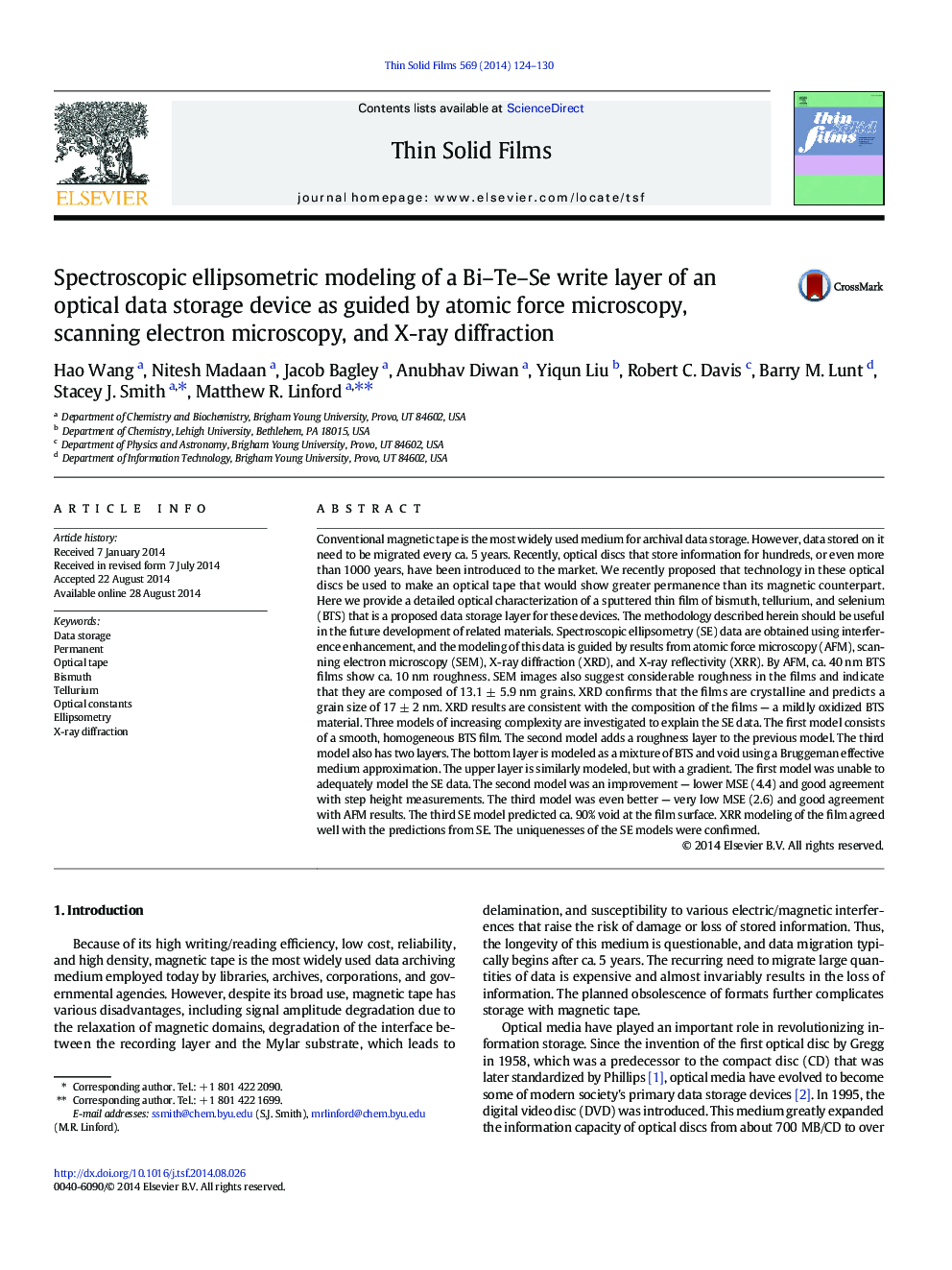| کد مقاله | کد نشریه | سال انتشار | مقاله انگلیسی | نسخه تمام متن |
|---|---|---|---|---|
| 1665255 | 1518035 | 2014 | 7 صفحه PDF | دانلود رایگان |

• A Bi–Te–Se thin film is characterized by spectroscopic ellipsometry (SE).
• The SE data are obtained using interference enhancement.
• Modeling of the SE data is guided by results from other techniques.
• Atomic force and scanning electron microscopy reveal rough, grainy films.
• X-ray diffraction and X-ray reflectivity confirm film composition and SE modeling.
Conventional magnetic tape is the most widely used medium for archival data storage. However, data stored on it need to be migrated every ca. 5 years. Recently, optical discs that store information for hundreds, or even more than 1000 years, have been introduced to the market. We recently proposed that technology in these optical discs be used to make an optical tape that would show greater permanence than its magnetic counterpart. Here we provide a detailed optical characterization of a sputtered thin film of bismuth, tellurium, and selenium (BTS) that is a proposed data storage layer for these devices. The methodology described herein should be useful in the future development of related materials. Spectroscopic ellipsometry (SE) data are obtained using interference enhancement, and the modeling of this data is guided by results from atomic force microscopy (AFM), scanning electron microscopy (SEM), X-ray diffraction (XRD), and X-ray reflectivity (XRR). By AFM, ca. 40 nm BTS films show ca. 10 nm roughness. SEM images also suggest considerable roughness in the films and indicate that they are composed of 13.1 ± 5.9 nm grains. XRD confirms that the films are crystalline and predicts a grain size of 17 ± 2 nm. XRD results are consistent with the composition of the films — a mildly oxidized BTS material. Three models of increasing complexity are investigated to explain the SE data. The first model consists of a smooth, homogeneous BTS film. The second model adds a roughness layer to the previous model. The third model also has two layers. The bottom layer is modeled as a mixture of BTS and void using a Bruggeman effective medium approximation. The upper layer is similarly modeled, but with a gradient. The first model was unable to adequately model the SE data. The second model was an improvement — lower MSE (4.4) and good agreement with step height measurements. The third model was even better — very low MSE (2.6) and good agreement with AFM results. The third SE model predicted ca. 90% void at the film surface. XRR modeling of the film agreed well with the predictions from SE. The uniquenesses of the SE models were confirmed.
Journal: Thin Solid Films - Volume 569, 31 October 2014, Pages 124–130